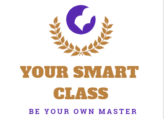Introduction
Action research is a practical problem-solving approach widely used in educational settings. Unlike traditional research that focuses on theory-building, action research emphasizes real improvements in teaching-learning processes. For teachers, it provides an opportunity to reflect on classroom practices, identify challenges, test strategies, and document outcomes.
The most important part of this process is report writing. A well-written action research report ensures that the findings are systematic, transparent, and useful for both the researcher and other educators.
This guide explains the process of report writing in action research, covering seven essential steps:
The Research Question
Rationale
Sample
Methods of Data Collection
Analysis and Interpretation of Data
Reflection of the Results
Development of Strategic Plan of Action

1. The Research Question
The research question is the foundation of an action research study. It defines the focus of the investigation and guides the entire process.
Characteristics of a Good Research Question
Clear and Specific – Avoid vague or broad statements.
Practical – Directly linked to classroom problems.
Action-Oriented – Should lead to solutions or strategies.
Feasible – Can be answered with available time and resources.
Example Research Questions
“How can group activities improve participation in science lessons?”
“What strategies can reduce spelling errors among Class 5 students?”
“How can peer learning enhance problem-solving in mathematics?”
A strong research question ensures the study stays focused and actionable.
2. Rationale
The rationale explains why the research is important. It justifies the need for the study by highlighting the significance of the problem.
Components of a Rationale
Problem Statement – The issue faced by the teacher or students.
Importance – Why the issue matters for learning outcomes.
Benefits – Expected improvements after solving the problem.
Example Rationale
“Many students in Class 7 avoid speaking in English, which affects their communication skills and confidence. Addressing this problem will help them participate more actively and improve overall academic performance.”
The rationale makes the research meaningful and relevant.
3. Sample
The sample defines who will be included in the research. In action research, the sample size is usually small and context-specific.
Key Considerations
Target Group – Students, teachers, or parents directly linked to the problem.
Sampling Method – Usually purposive sampling (participants chosen because they face the issue).
Sample Size – Typically a class or a group (e.g., 20–40 students).
Example
“The sample consisted of 30 students from Class 8B, who showed low participation in group discussions.”
A well-defined sample helps make the findings clear and applicable.
4. Methods of Data Collection
This section describes the tools used to gather information. In action research, both qualitative and quantitative methods are used.
Common Methods in Action Research
Observation – Recording student behavior and classroom activities.
Questionnaire – Collecting student or teacher feedback.
Interview Schedule – Gaining in-depth insights.
Rating Scales – Measuring performance or attitudes numerically.
Diary/Field Notes – Recording daily reflections.
Audio-Video Recording – Capturing teaching-learning interactions.
Photographs – Documenting classroom activities as evidence.
Example
“The researcher used observation and a questionnaire to record students’ responses before and after implementing peer-learning strategies.”
Choosing the right tools ensures accuracy and reliability of the data.
5. Analysis and Interpretation of Data
After collecting data, the next step is analyzing and interpreting results. This transforms raw data into meaningful insights.
Steps in Data Analysis
Organize Data – Arrange responses in charts, tables, or transcripts.
Quantitative Analysis – Use percentages, averages, and graphs for numerical data.
Qualitative Analysis – Identify recurring themes and student perspectives.
Example of Interpretation
“Before the intervention, only 20% of students participated in discussions. After implementing group activities, participation increased to 70%. Students reported feeling more confident when working with peers.”
Analysis and interpretation show whether the intervention was effective
6. Reflection of the Results
Reflection is what makes action research unique. It allows the teacher to evaluate personal learning and the effectiveness of strategies.
What to Reflect On?
Successes – Which parts of the intervention worked best?
Challenges – What problems remained?
Insights – What new understanding did the teacher gain?
Example Reflection
“The group activities improved participation overall, but a few shy students still hesitated. This indicates a need for additional confidence-building exercises.”
Reflection ensures that the research leads to continuous improvement.
7. Development of Strategic Plan of Action
The final stage is preparing a strategic plan for future action. This shows how the findings will be applied and sustained.
Components of a Strategic Plan
Future Steps – New actions to address remaining challenges.
Modifications – Refinements in strategies.
Sustainability – How to maintain improvements long-term.
Example Strategic Plan
“To further improve spoken English, the teacher will introduce role-play activities, encourage home practice, and conduct regular oral assessments. A follow-up study will be conducted in three months.”
This makes action research a cyclical process where each cycle builds on the previous one.
Conclusion
The process of report writing in action research involves systematic steps—research question, rationale, sample, methods of data collection, analysis, reflection, and strategic planning. Each stage ensures that the research is meaningful, practical, and directly linked to classroom improvement.
For teachers, action research report writing is not just documentation—it is a way to:
Reflect on professional practices
Improve student learning outcomes
Contribute to educational innovation
By following this process, teachers become researchers in their own classrooms, turning challenges into opportunities for growth.
Share this:
Discover more from YOUR SMART CLASS
Subscribe to get the latest posts sent to your email.








